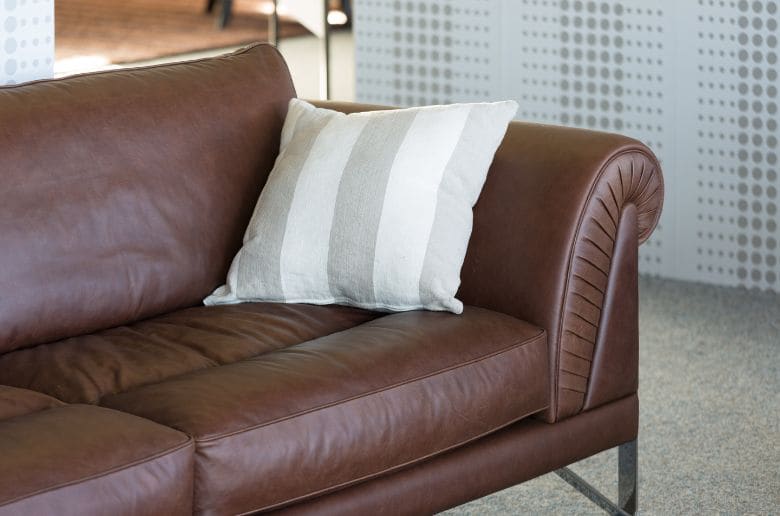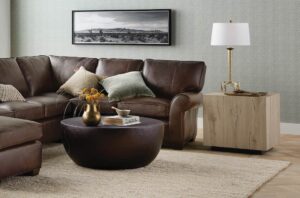When furnishing your home, the choice between Ballard Designs vs Pottery Barn is more than just a matter of taste; it’s about finding the perfect blend of style, quality, and value.
Each brand offers its unique flair, with Ballard Designs bringing a European touch to classic designs, and Pottery Barn offering a blend of modern and traditional aesthetics. The decision between these two can significantly impact the ambiance and functionality of your home.
This comparison delves into the nuances of each brand, helping you make an informed decision that aligns with your personal style and practical needs.
Quick Comparison
| Feature | Ballard Designs | Pottery Barn |
|---|---|---|
| Founding Year | 1983 | 1948 |
| Ownership | Part of Qurate Retail portfolio | Subsidiary of Williams-Sonoma, Inc. |
| Retail Presence | 15 retail stores, 3 outlet stores in the U.S. | Stores in the U.S., Canada, Mexico, Australia |
| Style Influence | European, with classic designs reinterpreted | Modern and traditional, transitional designs |
| Product Range | Furniture, accessories; over 300 customizable pieces | Wide range of home furnishings for various rooms |
| Noteworthy Milestones | Expansion under various ownerships, digital evolution | Expanded scope post-acquisition by Williams-Sonoma |
| Quality & Construction | Mix of materials, lower to mid-range quality | Premium materials, known for durability |
| Price Range | $100 to $3,000, frequent sales | $100 to over $5,000, less frequent sales |
Comprehensive Overview of Ballard Designs
Ballard Designs stands as a beacon in the home furniture and décor industry, renowned for its distinct European charm and innovative approach to design. Let’s uncover what makes this brand a go-to choice for many homeowners.
Founding History and Brand Evolution
The story of Ballard Designs begins in 1983 with Helen Ballard’s triumph in a home decorating contest. Her victory sparked not just a passion but a business idea, leading to the birth of Ballard Designs.
From its humble beginnings, Ballard Designs has grown into a part of the Qurate Retail portfolio, encompassing 15 retail and three outlet stores across the United States.
Unique European Influence in Products and Style
What sets Ballard Designs apart is its unmistakable European influence.
Each piece in their collection tells a story of timelessness and artistry, drawing inspiration from all periods and places, primarily focusing on reinterpreting classic designs with a contemporary twist.
This approach has resulted in a unique curation that resonates with those who admire European aesthetics.
Key Milestones and Digital Initiatives in Ballard’s Journey
Ballard Designs’ evolution is marked by significant milestones. In 1996, a pivotal moment came with its merger with Cornerstone Brands and subsequent incorporation into HSN, Inc.
This transition set the stage for further expansion under various ownerships, including QVC and Qurate Retail Group. Notably, the brand embraced the digital era with the launch of the “How To Decorate” podcast and a comprehensive decorating blog, marking significant strides in their digital journey.
Exclusive Designer Collaborations and Their Impact
The brand’s success is also attributed to its collaborations with renowned designers like Suzanne Kasler, Bunny Williams, and Miles Redd. These partnerships have infused Ballard Designs with exclusive collections, adding depth and diversity to its offerings.
The launch of the Casa Florentina collection, featuring luxury Italian hand-finished furniture, received positive customer reviews, further cementing Ballard Designs’ reputation for exclusivity and quality.
Ballard Designs’ story is one of innovation, evolution, and a commitment to bringing a European flair to American homes.
Through strategic partnerships, digital advancements, and a steadfast commitment to unique design, Ballard Designs has carved a niche that resonates with homeowners seeking a blend of tradition and modernity.
In-Depth Look at Pottery Barn
Pottery Barn, a household name in upscale home furnishings, has a rich history and a dynamic presence in the global market.
This section explores the brand’s evolution, its diverse product offerings, commitment to quality, and its expansive global reach.
The Journey from Founding to Becoming a Williams-Sonoma Subsidiary
Founded in 1948 by Paul, Morris, and Rachel Secon, Pottery Barn started as a small store. Its transformation began in earnest in 1986 when Williams-Sonoma, Inc. acquired it, marking a significant turning point.
Since then, Pottery Barn has grown into a beloved and respected brand in the home furnishing market, synonymous with quality and style.
Expansion and Diversification in Product Offerings
After the acquisition by Williams-Sonoma, Pottery Barn broadened its horizons.
Initially known for its eclectic array of pottery and kitchenware, the brand expanded to include furniture, accessories, and comprehensive decorating advice for every room in the home.
This expansion reflects a strategic diversification that caters to a wide range of customer needs and preferences.
Pottery Barn’s Commitment to Quality and Community Support
Pottery Barn’s commitment to quality is unwavering. Known for its meticulous craftsmanship, the brand uses premium materials like solid wood to ensure durability and longevity in its products.
Alongside its focus on quality, Pottery Barn is also dedicated to community support. Its efforts, particularly through the Pottery Barn Foundation, are a testament to its commitment to giving back, particularly in the fields of arts and education.
Global Retail Presence and E-Commerce Strategies
With retail stores across the United States, Canada, Mexico, and Australia, Pottery Barn’s global footprint is impressive. Its e-commerce platform further extends its reach, allowing customers worldwide access to its extensive range of products.
The brand’s adoption of e-commerce strategies has been pivotal in maintaining its relevance and accessibility in a rapidly changing retail landscape.
Pottery Barn stands out for its blend of traditional and modern design sensibilities, high-quality products, and a strong commitment to community and sustainability.
As a leader in the home furnishing industry, it continues to innovate and adapt, ensuring it meets the evolving needs of its global customer base.
Key Comparisons Between Ballard Designs and Pottery Barn
Choosing between Ballard Designs and Pottery Barn for your home furnishing needs comes down to understanding their distinct differences.
This section highlights the key areas where these two renowned brands differ, aiding in making a more informed decision.
Differences in Quality and Construction Materials
Ballard Designs vs Pottery Barn take different approaches to quality and construction.
Ballard Designs offers a mix of materials that range from lower to mid-quality. Some items in their collection feature handcrafted details but may show wear sooner than expected.
In contrast, Pottery Barn is recognized for its meticulous craftsmanship and use of premium materials, such as solid wood, resulting in higher durability and longevity of their products.
Contrasting Furniture and Décor Styles
The style ethos of these two brands couldn’t be more different.
Ballard Designs leans heavily on European country and French farmhouse aesthetics, offering a rustic charm in their designs. Their products reflect a contemporary reinterpretation of classic styles.
On the other hand, Pottery Barn’s designs are a blend of modern and traditional influences, showcasing transitional designs that exude timeless sophistication.
Product Range and Room Specialization Comparison
When it comes to product offerings and room specialization, both brands offer a diverse range.
Ballard Designs focuses primarily on bedroom, living room, kitchen, and outdoor spaces, with a wide range of décor accents and accessories.
Pottery Barn, conversely, offers extensive collections for various rooms, including bedrooms, dining areas, offices, and bathrooms, providing a comprehensive solution for home furnishing.
Pricing, Affordability, and Value for Money
Price points between the two brands also vary significantly.
Ballard Designs products are generally more affordable, with prices ranging from $100 to $3,000. They frequently offer sales, providing 15-20% discounts.
Pottery Barn, known for its premium quality, has a higher price range starting from $100 and going over $5,000, with less frequent sales. This difference in pricing reflects the brands’ distinct positioning in the market in terms of quality and exclusivity.
In summary, while Ballard Designs offers a European flair with more affordable options, Pottery Barn stands out for its superior quality and timeless designs.
Understanding these differences is crucial for customers to align their choices with their personal style preferences and budgetary considerations.
Which Brand Suits You Better?
Choosing between Ballard Designs vs Pottery Barn hinges on various factors, including specific needs, lifestyle preferences, quality, style, and budget.
This section helps you decide which brand aligns best with your home furnishing requirements.
Evaluating Ballard Designs for Specific Customer Needs
Ballard Designs is an ideal choice for those who are drawn to European aesthetics and seek a mix of traditional and contemporary styles. If your home demands a rustic charm or a French country vibe, Ballard Designs offers a plethora of options.
Their collection is especially suited for those who are decorating on a budget but do not want to compromise on style. Additionally, if you’re looking for quick shipping and frequent sales, Ballard Designs is the way to go.
Assessing Pottery Barn for Different Lifestyle Preferences
Pottery Barn, on the other hand, is perfect for those who prefer a blend of modern and traditional designs.
Their products are known for their superior quality and durability, making them a great choice for families or individuals who view their furniture and decor as a long-term investment.
If you are someone who values meticulous craftsmanship and is willing to invest in premium materials, Pottery Barn’s collections are likely to align with your preferences.
Deciding Factors Based on Quality, Style, and Budget
Your decision between these two brands will largely depend on three key factors: quality, style, and budget.
While Ballard Designs offers affordability and a unique European style, Pottery Barn stands out for its high-quality materials and timeless designs.
It’s essential to balance these factors against your budgetary constraints and style preferences to make the right choice.
Personalized Recommendations for Various Home Types
- For smaller spaces or those with a country aesthetic: Ballard Designs.
- For larger homes and a preference for long-lasting, classic pieces: Pottery Barn.
- Budget-conscious shoppers seeking style and variety: Ballard Designs.
- Those willing to invest in higher-end, durable pieces: Pottery Barn.
Your choice between Ballard Designs and Pottery Barn should be informed by how well each brand’s offerings align with your specific home furnishing needs and lifestyle choices.
Whether it’s the rustic charm of Ballard Designs or the sophisticated elegance of Pottery Barn, ensure your selection resonates with your personal style and functional requirements.
Conclusion
In this comprehensive comparison between Ballard Designs vs Pottery Barn, we’ve highlighted key aspects from quality and style to pricing and product range.
Choosing the right brand for your home is crucial and should resonate with your personal style and functional needs. We encourage exploring both Ballard Designs and Pottery Barn to appreciate the diverse range of options they offer.
As the world of home furnishings continues to evolve, these brands stand out for their unique approaches to home décor, each catering to different tastes and lifestyle needs.





